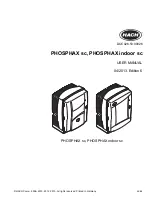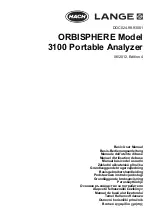
37
Understanding the Modules
The colored Access buttons select particular modules for editing, and can also be used to create
new mod routes. They are arranged in the order of signal flow, from left to right: [Osc] > [Mixer]
> [Filter] > [Amp] > [FX]. The front panel graphics indicate this, and also show the interactions
and independence of the modules.
There are two exceptions to the signal flow rule:
• The Voice module, located below the Exit button. It provides features such as the Unison
modes and Scale.
• The Ribbon module, which defines the behavior of this performance control.
Module Groups
We’ll only touch briefly on the modules here; most have their own chapters. Their purpose here
is to introduce operations that can be performed by any two modules from any module group.
For the sake of simplicity, the descriptions and examples for each module will assume
the Hydrasynth Deluxe is in Single mode (unless otherwise noted). Details about using
the modules in Multi mode are provided in
Oscillator group
The Oscillator group includes Oscillators 1-3,
the four Mutant modules, and the Ring-Noise
module. After the waveforms are generated
by Oscillators 1 and 2 they pass through their
respective Mutant modules before heading to
the Mixer module, where they are joined by
the outputs of Oscillator 3 and the Ring-Noise
module.
The modules that are in the Oscillator group
are described in
.
Mixer module
This module has some simple but important
functions, including the relative levels and
panning of the oscillators, how they are routed
through the filters, and whether the filters are
in a series or parallel configuration. Full details
are in
Filter group
Filter 1 and Filter 2 are similar in name and
function but their features are very different.
• Filter 1 has 16 different filter models,
including Low- / High- / Band Pass and
vocal formant options.
• Filter 2 is a multi-mode filter with two
types: Low Pass / Band Pass / High Pass and
Low Pass / Notch / High Pass. Each type can
“morph” between the three states.
The filters can be placed in parallel or series.
Full details are in
The Filters and their Controls
.
Envelope group
All five Envelopes have identical parameters,
and each can be triggered by up to four
sources. Dotted lines connect ENV 1 to the
Filter group and ENV 2 to the Amp module,
which means they have pre-wired connections
that show up as parameters in those modules.
But all Envelopes can be used as modulation
sources for any destination, and Envelopes 3-5
can be used as additional modulation sources
for the Filters and the Amp module.
Note that Envelope 2 does not show up by
name inside the Amp module, but its input
level is controlled by the AmpLevel parameter.
LFO group
All five LFOs have identical parameters. Dotted
lines connect LFO 1 to the Filter group and
LFO 2 to the Amp module, which means
they have pre-wired connections that show















































